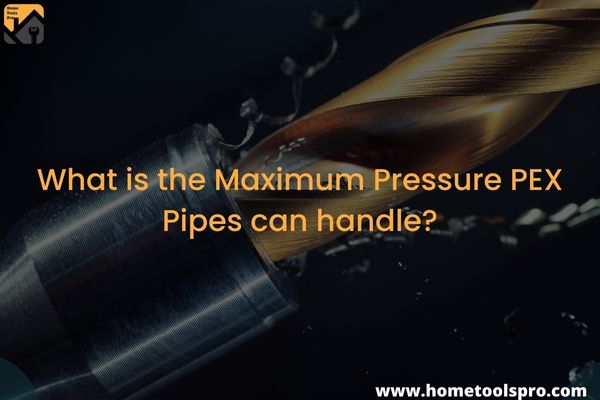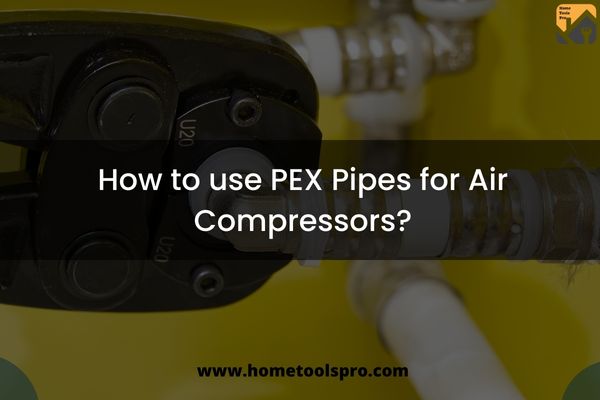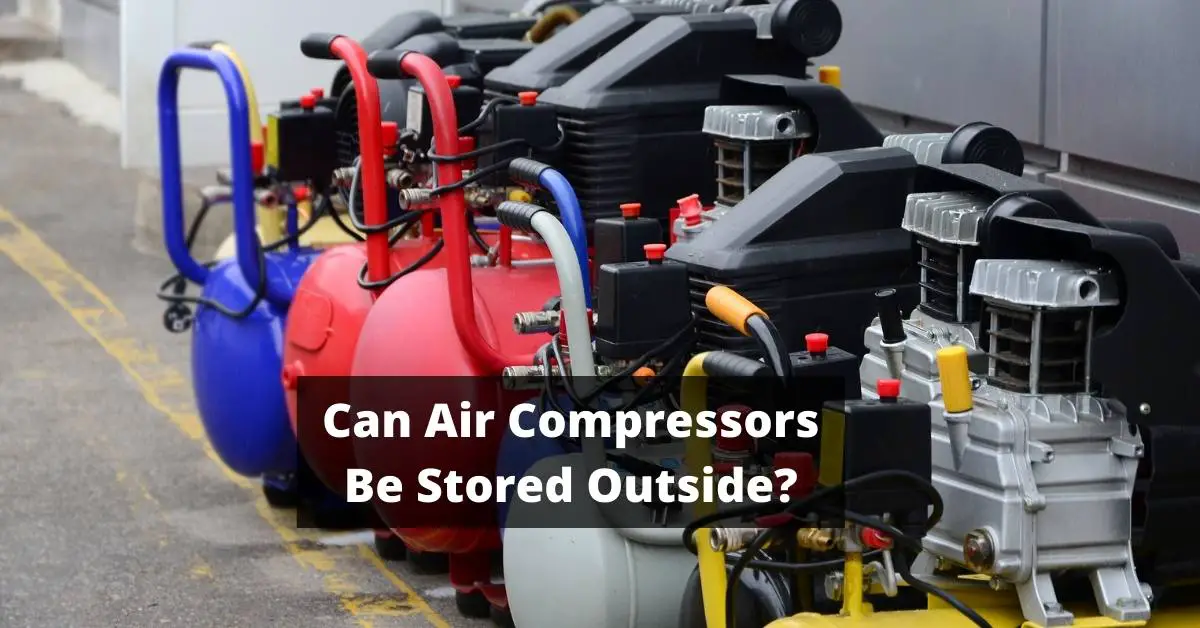Can you really use PEX Pipes for Air Compressors?
If you’re considering using PEX pipes for your air compressor, you might be wondering if it’s really up to the task.
After all, PEX is most commonly used in plumbing applications.
So, can you use PEX pipes for an air compressor?
The answer is yes – but there are a few things to keep in mind first.
For starters, not all PEX is created equal. There are two main types of PEX: oxygen barrier and non-barrier.
Oxygen barrier PEX is specifically designed to prevent oxygen from permeating the pipe and entering the system – something that’s critical for an air compressor, which relies on oxygen-free air for proper operation.
What are exactly PEX Pipes?
PEX pipes are made of cross-linked polyethylene, which is a type of plastic.
The “cross-linking” means that the molecules in the material are linked together, making it stronger and more resistant to heat and chemicals than regular polyethylene.
PEX is used for both hot and cold water lines and even air. It’s often used in radiant heating systems because it can withstand high temperatures.
PEX is flexible, so it’s easy to install in tight spaces.
What are the types of PEX Pipes?

PEX A:
PEX A is the most common type of PEX pipe. It is made with cross-linked polyethylene and has good flexibility, high heat resistance, and good chemical resistance. PEX A is often used in plumbing and radiant heating applications.
PEX B:
PEX B is also made with cross-linked polyethylene, but it has slightly different properties than PEX A. PEX B is less flexible but more resistant to heat and chemicals. PEX B is often used in hot water lines and industrial applications.
PEX C:
PEX C is the least common type of PEX pipe. It is made with chlorinated polyethylene and has good flexibility and chemical resistance. However, PEX C is not as resistant to heat as PEX A and B. PEX C is often used in cold water lines and plumbing applications.
Visual Explanations: https://www.youtube.com/watch?v=sldHS1DPpLk
How to Choose the Right PEX Pipe suits an Air Compressor?
As the name suggests, PEX pipes are made of cross-linked polyethylene.
This gives the pipes some unique properties that make them ideal for use with air compressors.
PEX pipes are more resistant to freezing and bursting than traditional metal or plastic pipes, and they’re also less likely to kink or leak.
When choosing a PEX pipe for your air compressor, it’s important to consider the diameter of the pipe.
The larger the diameter, the more airflow you’ll be able to achieve. However, a larger diameter pipe will also be more expensive.
It’s also important to choose a pipe that’s rated for the maximum pressure of your air compressor.
Most PEX pipes are rated for up to 200 PSI (pounds per square inch), but some are rated for higher pressures. Be sure to check the rating before you buy.
Finally, be sure to get the right fittings for your PEX pipe.
These can be found at any hardware store or online retailer that sells air compressor parts.
With the right fittings, you’ll be able to easily connect your PEX pipe to the rest of your air compressor system.
You can get started on your project now that you know how to choose the right PEX pipe for your air compressor.
Just be sure to take the time to do your research and choose a quality product that will last for years to come.
What are the features of PEX Pipes to use with Air Compressors?

Ease of Modification:
PEX is easy to handle & connect, so it can be modified easily to accommodate your air compressor system changes.
This is in contrast to copper or aluminium pipes, which are rigid and difficult to modify.
Flexibility:
PEX is also flexible, which makes it easier to work with than rigid pipes.
This means that you can install PEX pipes in tight spaces, and they are less likely to break or crack when frozen.
Easy Installation:
PEX pipes are easy to install, even for do-it-yourselfers.
You don’t need soldering equipment or special tools, and the pipes can be connected using compression fittings.
Less Cost:
PEX pipes are less expensive than copper or aluminium pipes, and they last just as long.
PEX is also resistant to corrosion and scaling, so it doesn’t require the same level of maintenance.
Safe:
PEX is safe for drinking water, and it won’t leach toxic chemicals into your water supply.
PEX is also flame-resistant, which makes it safer to use in your air compressor system.

No Corrosion:
PEX pipes are also resistant to corrosion so that they won’t rust or corrode over time.
This makes them ideal for use in humid or salty environments. It’s a good choice for use in an air compressor system.
What is the Maximum Pressure PEX Pipes can handle?

PEX, or cross-linked polyethylene, is a type of plastic tubing that is often used in home plumbing.
It is durable and flexible, making it a popular choice for both residential and commercial applications.
While PEX pipes are designed to be strong and withstand high pressures, there is a limit to how much pressure they can handle.
The maximum pressure that a PEX pipe can handle depends on the size of the pipe.
For example, a 1/2-inch PEX pipe can handle up to 160 PSI, while a 3/4-inch pipe can handle up to 200 PSI. Higher-pressure PEX pipes are available for some applications, but they are not as common.
When using PEX pipes, it is important to make sure that the system is not operating at or near the maximum pressure rating of the pipe.
This can be done by installing a pressure-reducing valve in the system.
If the system does operate at or near the maximum pressure rating of the pipe, there is a risk of the pipe bursting.
If you are unsure about the maximum pressure rating of your PEX pipes, you should contact a professional plumber or pipe manufacturer for more information.
Do not try to exceed the maximum pressure rating of your PEX pipes, as this could result in serious damage to your property.
Visual Explanations: https://www.youtube.com/watch?v=ZS7BV8yfIIE
How to use PEX Pipes for Air Compressors?

PEX pipes are made of high-density polyethylene, a durable and flexible material.
It has become a popular choice for many home improvement projects because it is easy to work with and can be used in a variety of applications.
PEX is often used for plumbing and radiant heating systems, but it can also be used for air compressor lines.
Air compressors are typically located in the garage or basement, and the airlines need to be routed to where they will be used.
This can often be done with copper or PVC pipe, but PEX is a great alternative because it is easy to work with and is less likely to leak.
PEX is also less expensive than copper or PVC, so that it can save you money on your project.
To install PEX for your air compressor, you will need to purchase some PEX pipes and fittings. You can typically find this at your local hardware store or online.
Once you have your materials, you will need to cut the PEX pipe to the desired length using a hacksaw or pipe cutter. Be sure to measure twice and cut once so that your pieces are the correct size.
Next, use a PEX fitting to connect the pieces of pipe together.
There are a variety of different types of fittings available, so be sure to choose the ones that are compatible with your type of PEX pipe.
Once all of your pieces are connected, you will need to attach them to your air compressor using clamps or hose clamps.
Be sure that the connections are secure so that there are no leaks.
Now, you are ready to use your air compressor with PEX piping!
This is a great alternative to traditional copper or PVC piping and can save you money on your project.
PEX is easy to work with and is less likely to leak, so it is a great choice for many home improvement projects.
Visual Explanations: https://www.youtube.com/watch?v=O4Ami2dkX4M
Are there any disadvantages of using PEX Pipes for Air Compressors?

Not UV Resistant:
One of the disadvantages of PEX is that it is not UV resistant and can therefore be damaged by direct sunlight.
This means that if you are using PEX for an outdoor air compressor, you will need to protect it from the sun or cover it with a UV-resistant material.
Can Be Damaged by Chemicals:
Another disadvantage of PEX is that it can be damaged by some chemicals.
This means that if you are using chemicals near your air compressor, you will need to be careful not to let them come into contact with the PEX pipes.
Moisture Issues:
PEX is also not ideal for use in moist or damp environments, as it can absorb moisture from the air.
This can lead to problems with the performance of your air compressor, so it is best to avoid using PEX in these conditions.
Despite these disadvantages, PEX is still a popular choice for air compressors due to its many benefits.
If you are considering using PEX for your air compressor, carefully weigh the pros and cons to decide if it is the right material for your needs.
Related Matters
Is PEX tubing rated for compressed air?
Yes, PEX tubing is rated for compressed air. It’s a great option for compressed air applications because it is flexible and easy to install.
Additionally, PEX is resistant to corrosion and has a high burst strength, making it an ideal material for use with compressed air.
Will PEX hold air pressure?
Yes, PEX will hold air pressure. In fact, it is commonly used in applications where high levels of pressure are required, such as in plumbing and industrial tubing.
PEX can withstand pressure due to its flexibility and durability. Additionally, PEX is resistant to water and other chemicals, making it an ideal material for high-pressure applications.
Where should you not use PEX?
PEX should not be used in areas where temperatures fall below freezing, as the material can become brittle and crack.
It should also not be used around flammable materials, as the heat produced by fire could cause the PEX to melt. Additionally, PEX should not be used in high-pressure or corrosive environments.




